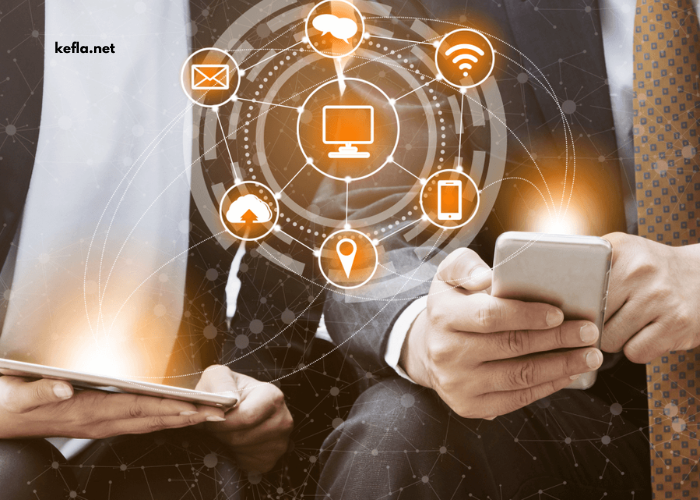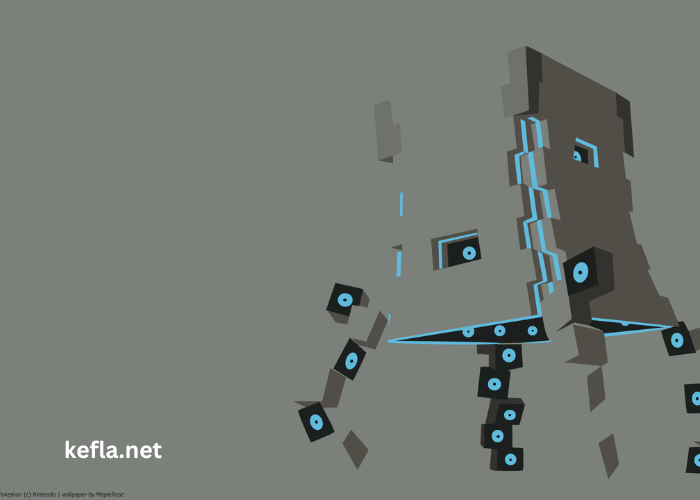The digital age has ushered in a new era of technological advancements that are fundamentally altering how we live, work, and interact with the world around us. As we move further into the 21st century, it is clear that technology is at the heart of every major breakthrough, driving innovation across industries, economies, and societies. From artificial intelligence (AI) to quantum computing, the latest technological trends are reshaping industries, pushing the boundaries of what is possible, and influencing the future of human progress. This article will explore the latest technology trends shaping the future of innovation and how they are creating new opportunities and challenges.
Artificial Intelligence and Machine Learning
The Rise of Artificial Intelligence (AI)
Artificial Intelligence (AI) has quickly become one of the most powerful forces driving innovation in almost every sector. AI systems are capable of performing tasks that traditionally required human intelligence, such as problem-solving, language processing, decision-making, and learning from experience. With the continuous advancements in AI algorithms, we are seeing an explosion of applications that are revolutionizing industries.
AI is enhancing everything from customer service to healthcare, finance, and even entertainment. Virtual assistants like Siri and Alexa have become household names, while AI-powered tools are automating processes, improving efficiencies, and providing personalized experiences to users. In healthcare, AI is being used to diagnose diseases, recommend treatments, and even predict health trends based on massive amounts of data.
Machine Learning (ML), a subset of AI, is also gaining momentum. ML algorithms enable machines to learn from data patterns and make decisions without being explicitly programmed. This has profound implications in areas like predictive analytics, cybersecurity, and autonomous vehicles.
The Future of AI: Autonomous Systems and Ethical Considerations
As AI technology continues to evolve, the future holds exciting possibilities for fully autonomous systems that can make decisions and perform tasks without human intervention. Self-driving cars, AI-powered drones, and robotics in manufacturing are just a few examples of how automation is taking center stage in our future. However, with the rapid growth of AI, there are increasing concerns about ethics, job displacement, and privacy.
Policymakers, businesses, and technologists are working together to address these issues and ensure that AI benefits society as a whole. The future of AI will likely involve a blend of human oversight and AI autonomy, with a focus on responsible and transparent practices.
5G Technology: The Next Generation of Connectivity
What is 5G and How Does it Impact Innovation?
The rollout of 5G technology is poised to be one of the most transformative technological trends of the next decade. As the fifth generation of wireless technology, 5G promises to deliver faster download speeds, lower latency, and greater network capacity than its predecessor, 4G. This enhanced connectivity will enable a new wave of innovation across industries, particularly in areas such as IoT (Internet of Things), autonomous vehicles, augmented reality (AR), and smart cities.
With 5G, the potential for real-time data transmission will be dramatically improved. This could open the door for innovations like remote surgeries, where doctors can perform operations from thousands of miles away, and immersive virtual and augmented reality experiences that require minimal latency for seamless interaction.
The Role of 5G in Advancing Smart Cities and IoT
One of the key drivers of 5G adoption is its ability to support massive numbers of devices connected to the internet. The Internet of Things (IoT), which is already playing a major role in smart homes, healthcare, and agriculture, will benefit immensely from the speed and efficiency of 5G networks. Smart cities, for example, could utilize 5G to monitor traffic, reduce energy consumption, and improve public safety with real-time data processing.
The advent of 5G will create an ecosystem of interconnected devices that can communicate and share data seamlessly. This is expected to enhance automation, improve decision-making, and unlock opportunities for innovation that were previously limited by the constraints of older technologies.
Blockchain Technology: Transforming Security and Transparency
The Fundamentals of Blockchain
Blockchain technology is most commonly associated with cryptocurrencies like Bitcoin, but its potential goes far beyond digital currencies. At its core, blockchain is a decentralized and distributed ledger technology that securely records transactions across multiple computers in a way that prevents tampering or altering. This ensures transparency, security, and trust without the need for intermediaries.
Blockchain has found applications in several industries, from finance to supply chain management, healthcare, and even voting systems. By eliminating the need for central authorities, blockchain reduces the risks of fraud, enhances data security, and ensures that transactions are tamper-proof.
Blockchain’s Role in Innovation and Future Growth
In the coming years, blockchain is expected to continue its disruption across various sectors. In finance, it is enabling faster and more secure transactions with lower fees, while in supply chain management, it is providing greater transparency and traceability of goods from origin to destination. The ability to create smart contracts, which are self-executing agreements with predefined conditions, is also opening up new possibilities in industries like real estate, legal services, and insurance.
Furthermore, blockchain’s ability to provide secure and transparent data sharing is poised to transform healthcare, where patient records and medical histories can be shared across systems in a secure and tamper-proof manner, ensuring privacy while improving the quality of care.
Quantum Computing: The Next Frontier in Processing Power
What is Quantum Computing?
Quantum computing represents a major leap forward in computational power. Unlike classical computers, which use binary bits (0s and 1s) to process information, quantum computers use quantum bits, or qubits. These qubits can exist in multiple states simultaneously, thanks to the principles of quantum mechanics, such as superposition and entanglement. This allows quantum computers to process exponentially more data at once, potentially solving problems that are currently beyond the reach of classical computing.
The implications of quantum computing are vast, and while the technology is still in its early stages, it holds the potential to revolutionize industries like cryptography, material science, artificial intelligence, and pharmaceuticals. For example, quantum computers could break current encryption methods, leading to new advancements in data security or the development of drugs that are far more effective than current treatments.
The Challenges and Opportunities of Quantum Computing
Despite its immense potential, quantum computing faces significant challenges, including the need for extreme operating conditions, like low temperatures, and the difficulty of scaling up quantum systems. However, research in this field is rapidly advancing, with major tech companies and governments pouring resources into quantum development.
Once these challenges are overcome, quantum computing could change the landscape of innovation across various industries. In fields like drug discovery and materials science, it could lead to faster development times for new products. In AI, quantum computing could accelerate learning algorithms, making them more powerful and efficient.
Augmented Reality (AR) and Virtual Reality (VR): The Future of Immersive Experiences
The Growth of AR and VR Technologies
Augmented Reality (AR) and Virtual Reality (VR) are rapidly gaining traction in both consumer and enterprise markets. AR overlays digital information onto the real world, enhancing users’ perception of their environment, while VR creates a completely immersive virtual environment that simulates real-world experiences.
The applications of AR and VR are vast, with industries ranging from gaming to healthcare, retail, and education all leveraging these technologies for innovative solutions. In retail, AR enables customers to try on products virtually before purchasing, while in healthcare, VR is used for training, pain management, and even remote surgeries.
How AR and VR are Shaping the Future
As AR and VR technologies become more sophisticated and affordable, they are expected to revolutionize many aspects of daily life. In the workplace, VR can provide immersive training environments, while AR will enhance real-time collaboration and productivity. In entertainment, both AR and VR will offer new ways to engage with content, from interactive games to live-streamed events.
The integration of AR and VR with other emerging technologies like AI and 5G will further unlock new possibilities for innovation, creating seamless experiences that blend the digital and physical worlds.
Conclusion
The latest technology trends—ranging from AI and 5G to blockchain, quantum computing, and AR/VR—are reshaping the future of innovation in profound ways. As these technologies continue to evolve, they will continue to unlock new possibilities and create groundbreaking solutions to global challenges.
Businesses, governments, and individuals will need to adapt to these changes by embracing new tools, fostering collaboration, and addressing the ethical, social, and economic implications of technological advancements. By doing so, we can ensure that these innovations lead to a more connected, efficient, and sustainable future for all.





